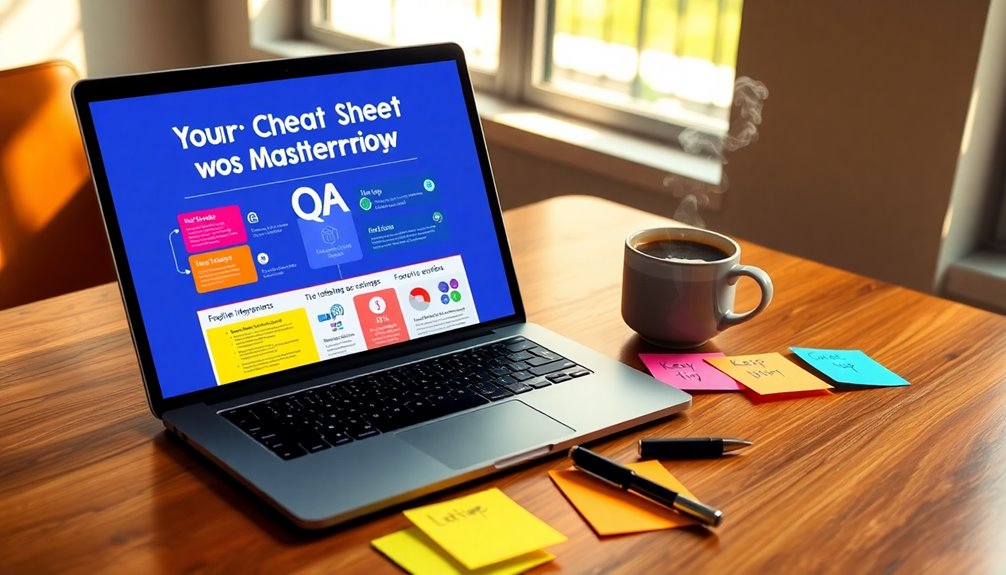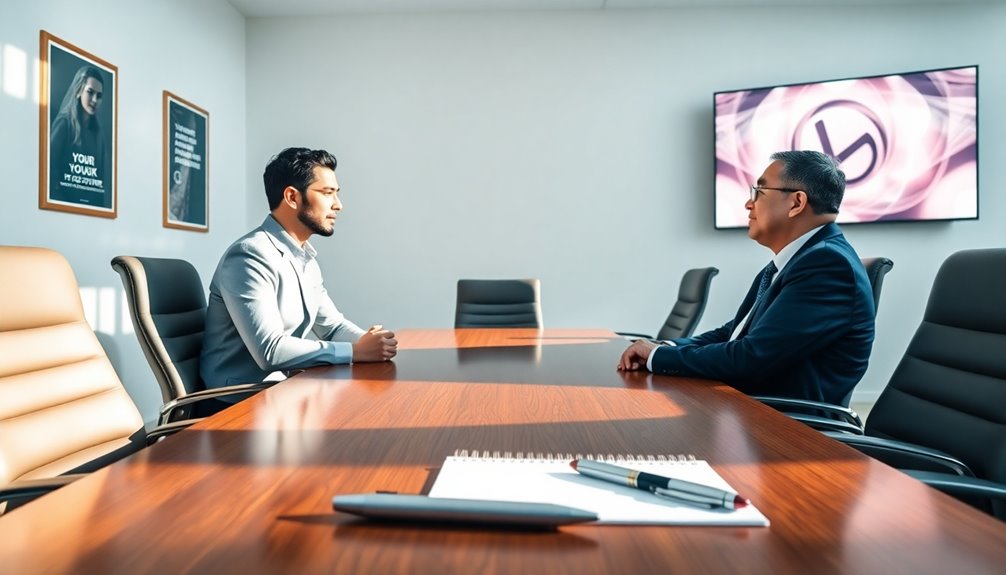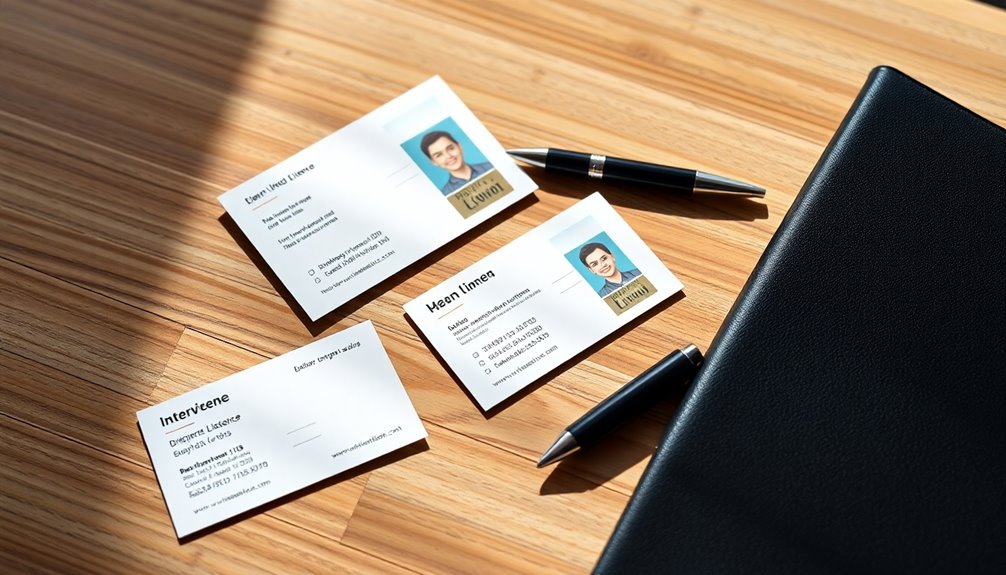To master job interviews, you need a solid approach. Start by researching the company and analyzing the job description. Prepare specific examples using the STAR method to highlight your skills. Expect common questions about your background and strengths, and practice your responses for clarity. Don't forget body language; maintain eye contact and offer a firm handshake to show confidence. After the interview, follow up with a thank-you note within 24 hours. Incorporating these tips can greatly enhance your performance. Stick around to discover even more insights that can set you apart in your next interview!
Key Takeaways
- Research the company's mission and values to tailor your interview responses effectively.
- Utilize the STAR method to structure answers for behavioral questions clearly.
- Prepare specific examples of past successes that demonstrate relevant skills and qualifications.
- Practice positive body language, including eye contact and a firm handshake, to convey confidence.
- Follow up with a thank-you note within 24 hours to express gratitude and reiterate interest in the role.
Preparing for Success
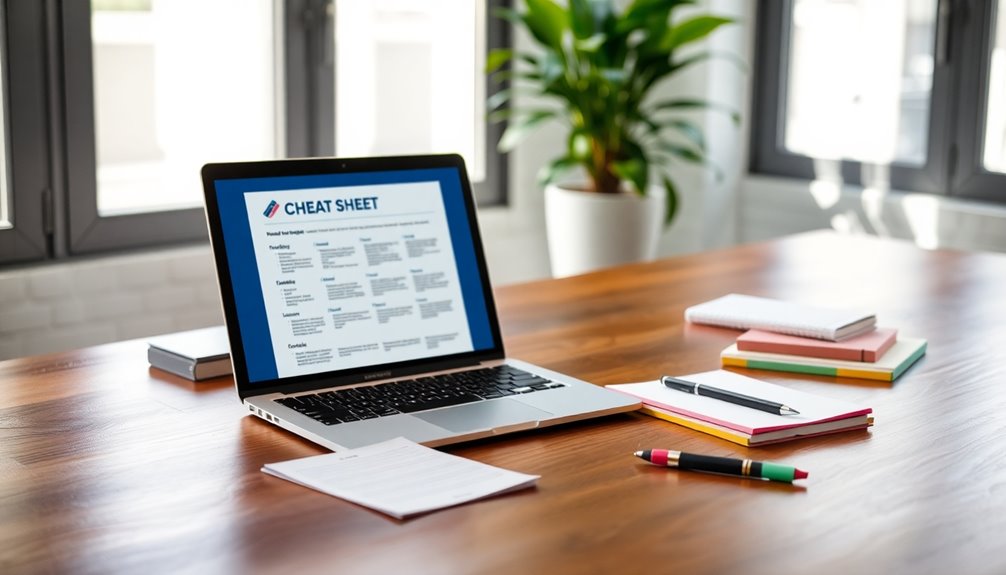
To consistently set yourself up for success in a job interview, thorough preparation is key. Start by researching the company's mission, values, and culture. Understand their products or services, market position, and key competitors. This knowledge will help you articulate why you're a great fit for the role. Additionally, it's essential to demonstrate genuine interest in the organization during the interview, as this can make a positive impression on the interviewer.
Next, dive deep into the job description. Read it carefully to grasp the responsibilities and qualifications required. Identify the key skills and experiences that align with what the employer is seeking. Prepare specific examples demonstrating how you've successfully applied these skills in past roles. This targeted approach gives you a unique edge.
Practicing your answers is equally important. Use techniques like the STAR method to structure your responses. Rehearse answering common questions aloud, possibly with a friend, or even in front of a mirror. This will help you refine your delivery and guarantee your answers are clear and concise.
On the interview day, aim to arrive 10-15 minutes early. Bring multiple copies of your resume and a notebook for notes. Greet the interviewer with a firm handshake and a smile, maintaining eye contact.
This preparation will boost your confidence and set you up for success!
Common Questions to Expect

Anticipation can be a powerful ally as you prepare for a job interview, especially when it comes to the questions you might face. Common inquiries often start with your background. Be ready to talk about yourself, your current role, and your key accomplishments.
Employers want to know why you're a fit for their position, so align your skills with their needs. Understanding common interview questions can help you tailor your responses effectively.
You'll likely be asked how you heard about the job and what excites you about it. Demonstrating your knowledge of the company's mission and values can set you apart.
Expect questions about your strengths and weaknesses, too. Highlight your skills and offer specific examples while showing self-awareness in discussing areas for improvement.
Behavioral questions will test how you handle challenges, so prepare to share experiences using the STAR method.
Finally, don't forget to have questions ready for your interviewer. Ask about company culture, role-specific challenges, and opportunities for growth. This shows your genuine interest and helps you assess if it's the right fit for you.
Mastering the STAR Method

Mastering the STAR method can greatly enhance your performance in behavioral interviews. This structured approach—Situation, Task, Action, Result—helps you convey clear and impactful stories from your past experiences.
Start by reviewing the job description to pinpoint relevant skills and challenges, which will guide you in anticipating behavioral questions.
Next, list past experiences that showcase your strengths. Practice your responses, focusing on brevity and clarity. When constructing your STAR answers, keep in mind the breakdown:
- Situation (20%): Briefly set the scene and provide necessary context.
- Task (10%): Clearly outline your objective and role in the scenario.
- Action (60%): This is where you shine! Detail the steps you took, emphasizing skills and decisions made.
- Result (10%): Share the outcomes of your actions, including specific metrics or lessons learned.
Remember to keep your answers concise and relevant. Highlight the impact of your contributions, and guarantee your delivery feels natural. Using the STAR method enhances your communication skills, allowing you to effectively demonstrate your qualifications.
Practicing these structured responses won't only prepare you for the interview but also boost your confidence.
Body Language Tips

Strong body language can greatly influence the impression you make during an interview. Start by making strong eye contact and smiling as you enter the room, conveying warmth and approachability. Offer a firm handshake—this shows confidence without being overly aggressive. Greet everyone with professionalism, from the receptionist to the hiring manager.
While seated, maintain good posture with your shoulders back and spine straight. This posture reflects confidence and engagement. Sit upright, avoiding slouching or leaning back, which can suggest disinterest. Lean slightly forward to show you're invested in the conversation. Remember that good posture conveys confidence and professionalism, setting a positive tone for the interview. Additionally, showing emotional well-being through your demeanor can create a more inviting atmosphere during your interaction.
As you interact, establish and maintain eye contact to demonstrate attentiveness, but remember to blink naturally to avoid an intense stare. Smile appropriately and nod occasionally to signal engagement. Control your hand movements; keep them relaxed at your sides or use them for note-taking. Avoid fidgeting, tapping fingers, or excessive gesturing, which can convey nervousness.
Finally, keep your legs uncrossed and refrain from foot tapping, as this can indicate impatience. Mastering these body language tips will help you create a positive impression and enhance your overall interview performance.
Effective Follow-Up Strategies
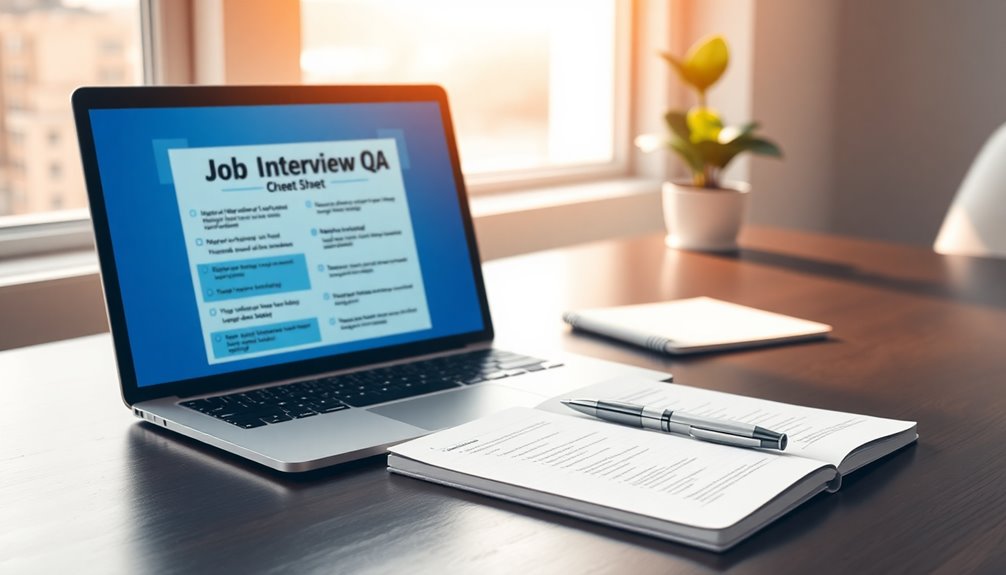
Following up after a job interview is essential for reinforcing your interest and leaving a lasting impression. Aim to send a thank-you note or email within 24 hours, ideally by the end of the day. This guarantees your message is the first thing the interviewer sees the next morning.
If they mentioned they'd be in touch 'next week,' wait about 10 days before checking in.
In your follow-up, start with a clear introduction, mentioning the specific job title and company. Thank the interviewer for their time and reiterate your enthusiasm for the role. Highlight key points from your discussion to jog their memory and briefly mention any qualifications you didn't cover. It's also important to remember that a follow-up call can help manage expectations regarding the hiring process.
Use email for your initial note, as it's formal and easy to track. Make the subject line engaging, like "Thank you for your time today, [Interviewer’s Name]."
If you don't receive a response, consider a phone call, but prepare a script to avoid awkward pauses. Throughout all communications, maintain professionalism, express gratitude, and show continued interest in the position.
If you're not selected, thank them for the opportunity and be open to feedback.
Frequently Asked Questions
How Should I Dress for a Job Interview?
When you're dressing for a job interview, consider the company culture first. Research their dress code and check out their social media for clues.
For casual workplaces, opt for dark jeans or a knee-length dress; for business casual, go for tailored pants and a blouse. Ascertain your outfit is clean, fits well, and allows comfortable movement.
Pay attention to grooming and avoid anything too flashy to keep the focus on you.
What Should I Bring to the Interview?
When you prepare for an interview, bringing the right items can make a big difference.
Start with multiple copies of your resume and cover letter, along with references.
Don't forget a notepad for jotting down notes and questions.
If you're in a creative field, include your portfolio.
Keep a charged phone and a water bottle handy to stay refreshed.
Finally, have proof of identity ready, just in case.
How Long Should My Answers Be?
When answering interview questions, it's essential to tailor your response length. For factual questions, keep it under 30 seconds.
Introductory questions should take 30 to 90 seconds, allowing you to share relevant details.
For behavioral questions, aim for 3 to 4 minutes, using the STAR method to structure your response.
Always practice your answers to guarantee they're polished and adjust based on the interviewer's engagement to maintain their interest.
How Can I Handle Unexpected Questions?
When you face unexpected questions, stay calm and take a deep breath. It's okay to ask the interviewer to repeat or clarify.
Focus on your key message, ensuring your response relates to the job. Use relevant examples to illustrate your points.
If you don't know an answer, be honest and show your willingness to learn. Talk through your thought process to demonstrate your problem-solving skills and how your experiences align with the role.
What if I Don't Have a Specific Example to Share?
If you don't have a specific example to share, use hypothetical scenarios to illustrate your thought process.
Describe how you'd tackle a similar situation and outline the steps you'd take.
Look into past company strategies and analyze their effectiveness, suggesting improvements.
Emphasize your transferable skills, showcasing how they apply to the current role.
Prepare generic examples to adapt on the spot, ensuring you demonstrate key competencies and relevant experiences.
Conclusion
In your journey to job interview success, remember that preparation is key. Practice powerful responses, polish your body language, and perfect your follow-up strategies. With these tools, you'll confidently conquer common questions and stand out from the competition. So, gear up, grab your cheat sheet, and get ready to shine! Your dream job is just a stellar interview away. Stay sharp, stay focused, and seize the spotlight!
Emmeline is the backbone of our content creation team, bringing complex psychological concepts to life with clarity and empathy. As our Expert Writer, she crafts engaging, insightful articles that guide readers through the intricacies of personality assessments and what they reveal about the human condition. Her passion for psychology and personal development shines through in every piece she writes.
